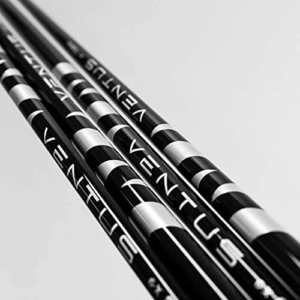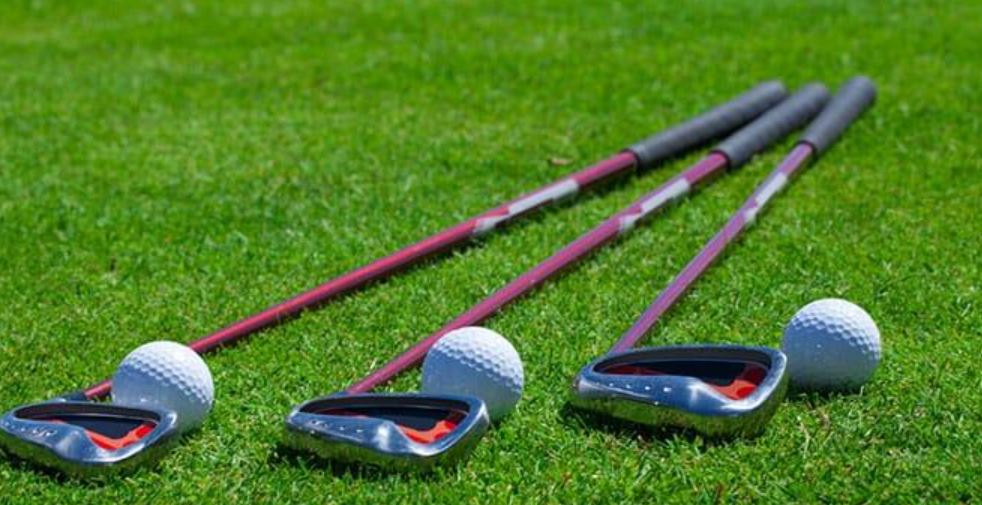Pros And Cons Of A Heavier Driver Shaft

Bryson DeChambeau has been a cult figure among golf fans for his ability to smash bombs off the tee. His swing speed, combined with low loft, and a heavy driver shaft, delivers explosive ball speed and outrageous distance.
While this setup works for Bryson, it doesn’t mean you will average 323 yards with a driver. That is why I am covering the pros and cons of a heavier driver shaft in this article. The aim is to help you decide if your driver shaft is too light or heavy for your swing.
Driver Shafts And Their History
According to Golf WRX’s Ryan Barath, shafts were constructed from wood until the 1920s. It was then that British fishing rod producer Apollo released their steel shafts, which took time to get the approval of the everyday player.
The shafts were deemed non-conforming, but in 1924 the USGA approved them, followed by the R&A five years later. Steel shafts are still popular today, along with graphite shafts.
The Golf Channel’s Al Tays explains that after dabbling in fiberglass shafts during the mid-60s, The Shakespeare company set out to find the best materials. The company tasked Frank Thomas with this role, and in 1968 he developed the graphite shaft.
How Important Is Shaft Weight To Your Game
The team at TPT Golf mentions that shaft weight impacts your swing and clubhead speed and muscle activation.
In turn, it affects your ball speed, launch, and carry. Without the correct shaft weight, you will lose distance, balloon your drives, slice, hook or struggle to get the ball airborne.
What Factors Influence The Driver Weight You Should Use
According to True Temper Sports, four factors influence the driver weight you should use. These factors include swing speed, clubhead speed, trajectory, and spin.
If you are a fast swinger, a heavier shaft with less flex may deliver the best results. The stiffer shaft, combined with extra mass, promotes lower ball flight and less spin to promote maximum distance.
Conversely, those with slower swing speeds might find that a lighter shaft with more flex is easier to launch and gives you a higher ball flight for longer carry.

Pros Of Heavier Driver Shafts
Swing Speed
TPT Golf suggests that heavier shafts are ideal for increasing swing speed. While this might sound outrageous, it is true. When swinging a heavier shaft some players maximize muscle activation, which helps them maximize speed.
Low Ball Flight
When a faster swinger launches a driver with a lighter shaft, they risk ballooning their shot and losing distance. That is why the natural lower trajectory promoted by heavier driver shafts tends may suit you the best.
Less Spin
Andrew Tursky from Golf.com explains that the heavier your driver shaft is, the more chance there is of the ball flying lower with less spin. If you are a faster swinging golfer, this combination is ideal for maximizing distance off the tee.
Stability
A heavier shaft helps to stabilize the club at impact, promoting a squarer face. True Spec Golf’s Tim Briand explains that lighter shafts may cause your clubface to close at impact, causing you to hook your drives.
Cons Of Heavier Driver Shafts
Clubhead Speed
The first disadvantage of a heavier shaft comes in the form of clubhead speed.
Some players will struggle to optimize their clubhead speed with a heavier shaft, reducing their COR. That dreaded combination impacts your ball speed and leads to a low launching shot that costs you distance.
Launch
When we combine the loss of clubhead and ball speed, we experience a dismal launch and a significant loss of carry and total distance.
How To Know If Your Driver Is Too Light
Tim Briand says that a light shaft does not make you swing faster. Contrary to the numerous claims.
However, he says that a lighter construction can cause your clubface to close at impact, resulting in a serial hook. If you are experiencing this atrocity, it is worth trying a heavier shaft.
How To Know If It Is Too Heavy
According to Andrew Tursky, heavy shafts promote a lower ball flight and reduced spin.
If you struggle to get your drives airborne and lose distance, your shaft may be too heavy for your swing.
What’s The Best Way To Find Your Optimal Weight
The best way to find your optimal shaft weight is to visit a fitting professional.
They will get you set up on a launch monitor and conduct a few tests to determine which shaft best fits you.
Best Heavy Driver Shaft
Fujikura Ventus Black 6 X

Fujikura’s engineered their premium to boost shot dispersion and ball speed on heel and toe mishits. Added to the shaft’s forgiving nature is its ability to enhance the clubhead’s MOI, delivering higher velocity and smash factor.
Furthermore, the Black 6 X features an ultra-stiff tip that combats twisting on your backswing to prompt a square face at impact. Plus, the stiff midpoint on the shaft brings additional stability to the club for optimal control.
Finally, the ultra-stiff handle enhances energy transfer at impact for a smooth feel and powerful launch. Although heavier shafts exist, the Ventus Black 6X is still a potent heavy driver shaft.
Pros
- Combats twisting on your backswing
- Stable shaft
- Maximizes energy transfer at impact
- Low ball flight
- Reduced spin
- Medium launch
Cons
- Not suited to players with slower swing speeds
- Expensive
Check Out More Reviews:
Best Mid Weight Driver Shaft
Aldila NVS S Driver Shaft

Aldila claims that their NVS Orange is one of their most popular after-market shafts. Aldila designed it with NexGen Micro Laminate Technology (MLT) that uses premium carbon fiber to eradicate gaps and dead zones.
Furthermore, the MLT reduces inconsistent strikes and enhances the feel at impact, while the constant taper optimizes flex. Finally, Aldila included a soft tip section that initiates a higher launch with increased spin.
Pros and Cons
Pros
- Excellent feel
- Well constructed
- Promotes a high launch
- Delivers consistent flex
- Affordable
Cons
- Faster swingers may balloon shots with this 68-gram shaft.
Check Out More Reviews:
Best Light Driver Shaft – Mini Review With Pros And Cons
Project X HZRDUS Smoke Black RDX 60

True Temper’s Project X HZRDUS Smoke Black RDX 60 is a 58-gram driver shaft built for those of you with a fast swing tempo and who desire low ball flight and spin.
Project X partnered with aerospace and military composite technology experts Hexcel to construct the shaft. They employed high modulus carbon fiber and high tensile strength HexTow carbon fiber to provide stiffness and stability at impact.
The Smoke Black RDX 60 is best suited to players with an aggressive transition and faster swing tempo. With the correct swing, this shaft will deliver exceptional distance off the tee. However, slower swingers may struggle to get their tee shots airborne with the RDX 60.
Pros
- Built for players with fast swing tempos
- Delivers low ball flight
- Produces lower levels of spin for increased distance
- Stable
- Durable material
- Affordable
Cons
- It is not suited to players with a deliberate tempo
- Slower swinging players may lose distance off the tee with this shaft.
Check Out More Reviews:
FAQ
What driver shaft does Rory McIlroy use?
According to this 2021 article from the PGA Tour, Rory Mcilroy uses the popular Fujikura Ventus Black 6 X.
What is the best driver shaft for distance?
The answer depends on the player. Slower swingers that struggle to get the ball airborne with heavier shafts will enjoy more success with a lighter construction.
Conversely, if you are a fast swinger, a lighter shaft might cause you to balloon your shots and lose distance. In this case, a heavier shaft with less flex is likely the best option to achieve maximum yardage.
Will a heavier shaft lower ball flight?
Golf.com’s Andrew Tursky says that a heavier shaft is likely to promote a lower ball flight with less spin.
Does a lighter shaft increase swing speed?
If you ask True Spec Golf’s Tim Brians, he says that a lighter shaft does not impact swing speed as much as we think.
How can I tell my swing speed?
The easiest way to determine your swing speed is to test it using a personal launch monitor. It will also give you estimated distance, launch angle, and backspin RPM.
Conclusion

Our review of the pros and cons of a heavier driver shaft has helped us better understand who should play it and who should stay away. The pros of a heavier golf shaft include their low ball flight, reduced distance, and increased stability at impact.
Conversely, a heavier driver shaft reduces the clubhead speed of some golfers, leading to low launch and a loss of distance. In the end, a heavier driver shaft is best suited to players with faster tempos looking for a lower launch of the tee.
If you are a faster swinging golfer and are in the market for a new shaft, it is worth researching the Fujikura Ventus Black 6 X. You can find more details on it here.
